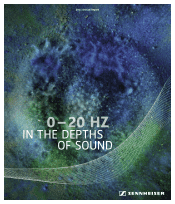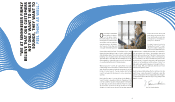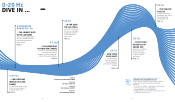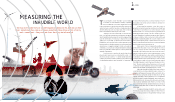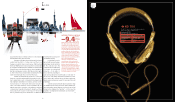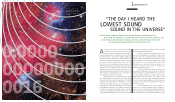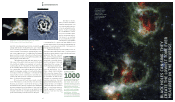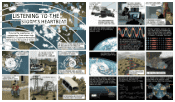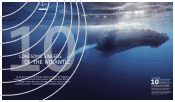Sennheiser 2011 Annual Report Download - page 6
Download and view the complete annual report
Please find page 6 of the 2011 Sennheiser annual report below. You can navigate through the pages in the report by either clicking on the pages listed below, or by using the keyword search tool below to find specific information within the annual report.
10
0 – 20 Hz
found that infrasound can im-
pair whales’ hearing.
In building acoustics,
we normally measure frequen-
cies between 100 Hz and 5,000
Hz. My company tests the
Sound Transmission Class (STC)
of all types of architectural
materials – from walls, to
doors, windows, building fa-
çades and special barriers. Even though our own state-of-
the-art, 200-cubic-meter reverberation chamber is accred-
ited to 80 Hz, that’s still way above the infrasound range.
Clearly, new procedures are needed to measure infrasound
in buildings.
Scientists and governments have long been looking
into whether infrasound can be used to detect weather pat-
terns and predict natural disasters, such as volcanoes and
tsunamis. By studying the “invisible” – in this case, the
inaudible – we might better understand our environment –
and save lives. ■
argue that the impact is likely low, there is some evidence
that wind farms may cause insomnia.
We went to the Metrodome in Minneapolis to better
understand the effects of subwoofers and their low-
frequency sounds at major concert venues. Pink Floyd and
the Steve Miller Band, for instance, have their sound cranked
up as high as 130 dBA peak. The tremendous volume makes
it hard to hear so the musicians have to rely on feedback to
feel the low-frequency sounds so that they can stay togeth-
er. And it’s the infrasound and vibration blasting from the
subwoofers that makes the crowd “feel” the music.
Animals are tremendously sensitive to sound, and
there are some fascinating studies being carried out in or-
der to understand acoustic communication between mam-
mals. Elephants and whales, for instance, can hear over im-
mense distances. Following the Indonesian tsunami in
2004, researchers wanted to find out whether the ele-
phants were able to sense the coming disaster and then
communicate it onward as they tried to break free of their
chains. Important research on the impact of infrasound
that is generated by naval submarines on whales has
t
HD 700
The HD 700 uses its amazing frequency range to
paint soundscapes on widescreen.
Frequency response 8-44,000 Hz (-3 dB)
Transducer principle Dynamic, open
Total harmonic
distortion
≤ 0.03 % (1kHz,
1Vrms)
Weight 270 g
Sennheiser HD 700
Reference Audiophile Headphones
AUGMENTED
REALITY
AUTHOR STEVEN J. ORFIELD
–9.4
Steven J.
Orfield is
the found-
er of Or-
field Laboratories (OL) in Minneapolis,
USA. OL provides design, research and
testing services for the architectural
and research communities. OL designed
the first American Sound Quality analy-
sis system, which included evaluation of
major professional audio headphones.
After conducting thorough tests, OL de-
cided to use Sennheiser headphones for
all its studies on sound. Currently, Or-
field is using the new Sennheiser HD 700
whose specially tuned, high-
efficiency converters deliver high
sound-pressure levels and a vented
magnet system that minimizes air tur-
bulence and, with it, distortion. The
American is also known for his anechoic
chamber, which was awarded “The Qui-
etest Place on Earth” by the 2005 Guin-
ness Book of World Records. The sound
level in this chamber is -9.4 dBA.
ESSAY

